The capital of Macedonia, Skopje, is a quirky one. While some may find it extremely charming, some others can be heard saying that the city is fully of kitschy architectural choices. Despite being a rather small city, it is home to Ottoman-era architecture, Yugoslav monuments, and perhaps most strikingly, very recently built sculptures and buildings that mimic ancient Macedonian style after the Skopje 2014 project that saw the city change its skin over a few years, at least on paper. Let us now go ahead and see what Skopje has to offer to its visitors.
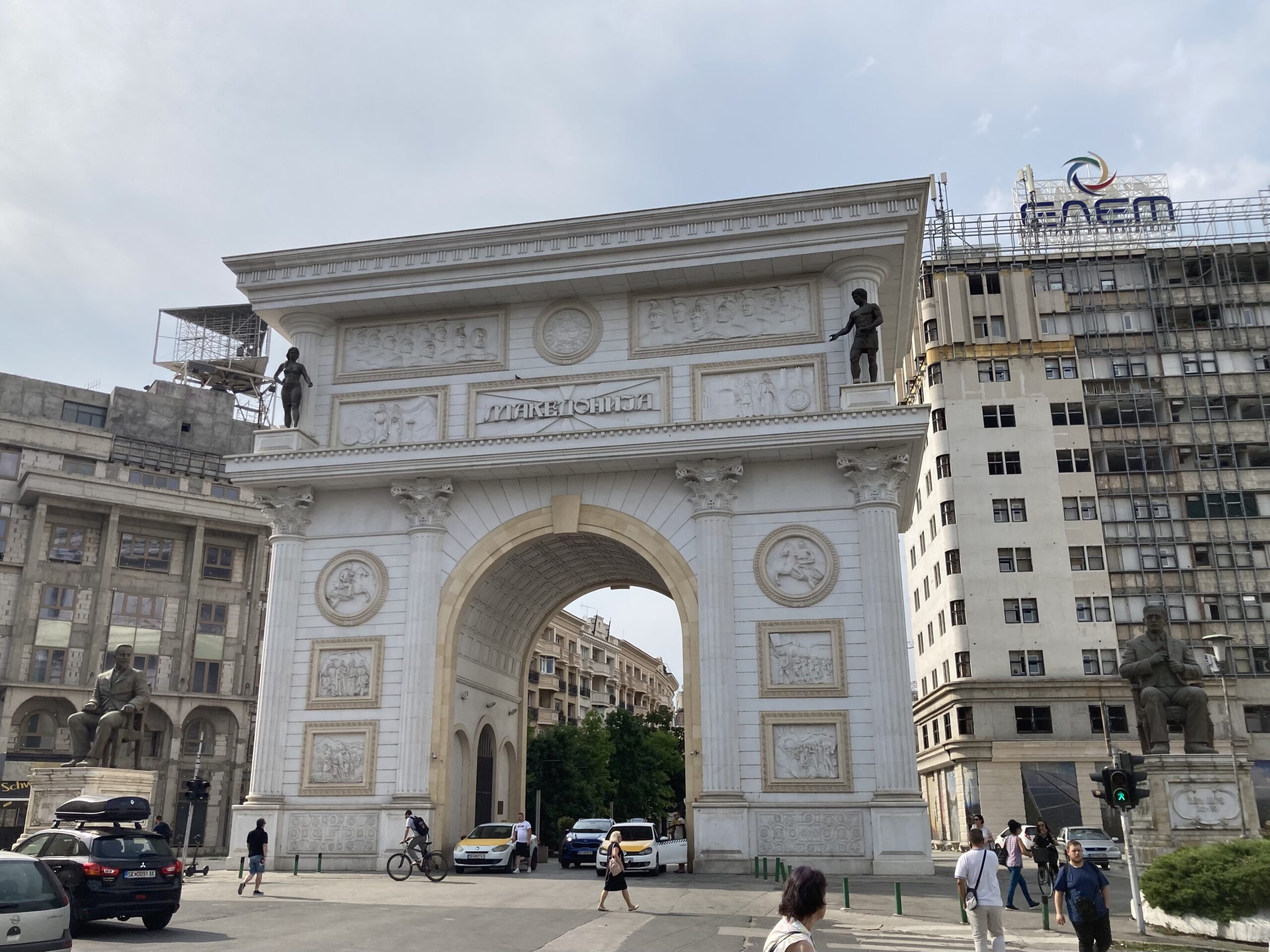
You can feel that Skopje, in many ways, is a city that is on a quest for identity. In an effort to show that it is a Macedonian city, and also a Western city, Skopje replicates all that its administrators think it should. One of these replications can be seen in the Triumph Arch of Macedonia near the city’s center. After all, most Western cities have one, why should not Skopje get its own?
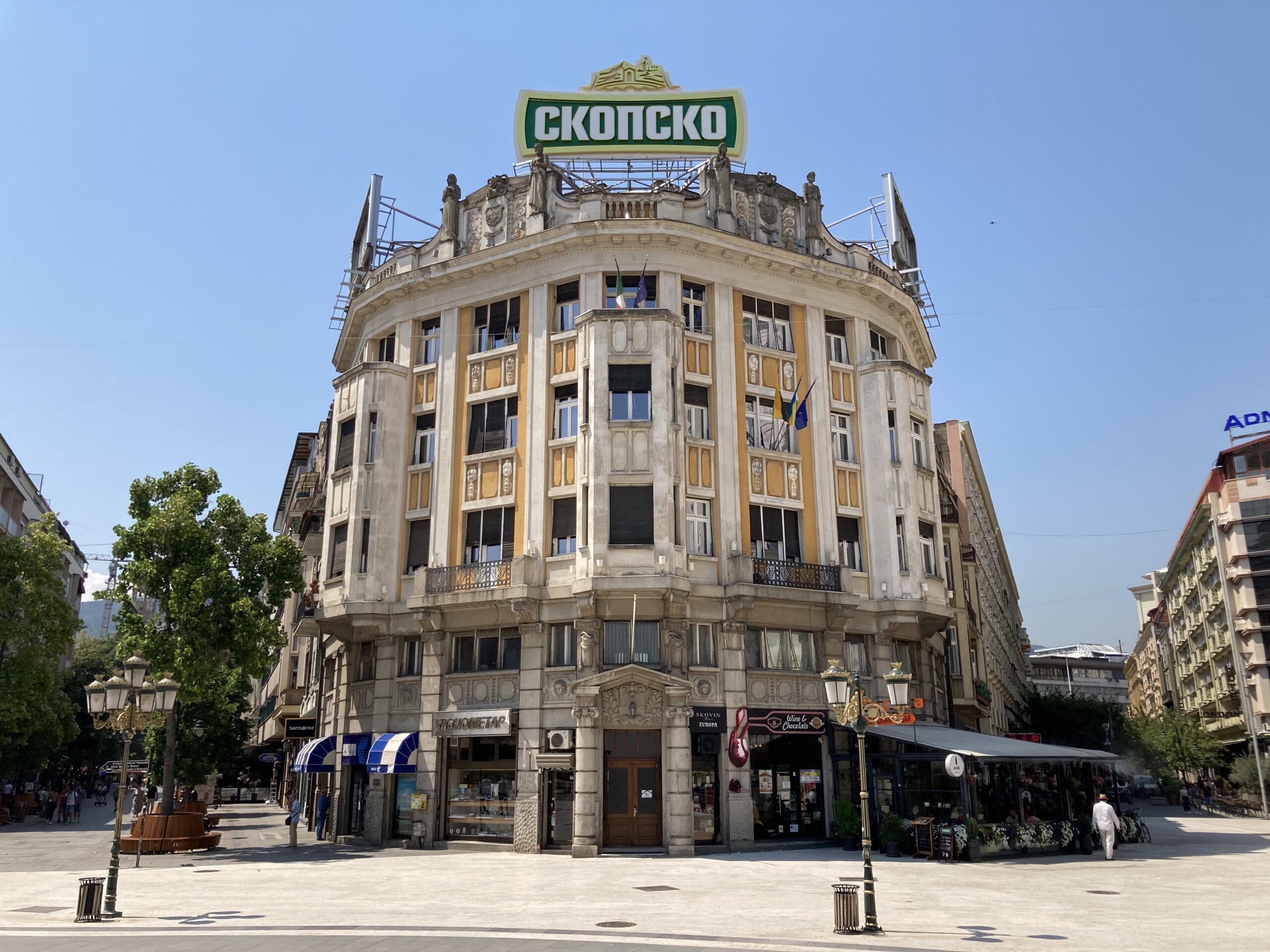
Once you go pass that memorial arch, you will arrive at the Macedonia Square. You see, there is a theme here. Almost everything is simply named after Macedonia, the ancient kingdom with which the current Macedonian state (well, certainly its previous government) wants to be associated with. Here you can see the Ristikieva Palace, one of the older and more beautiful buildings in all of Skopje.
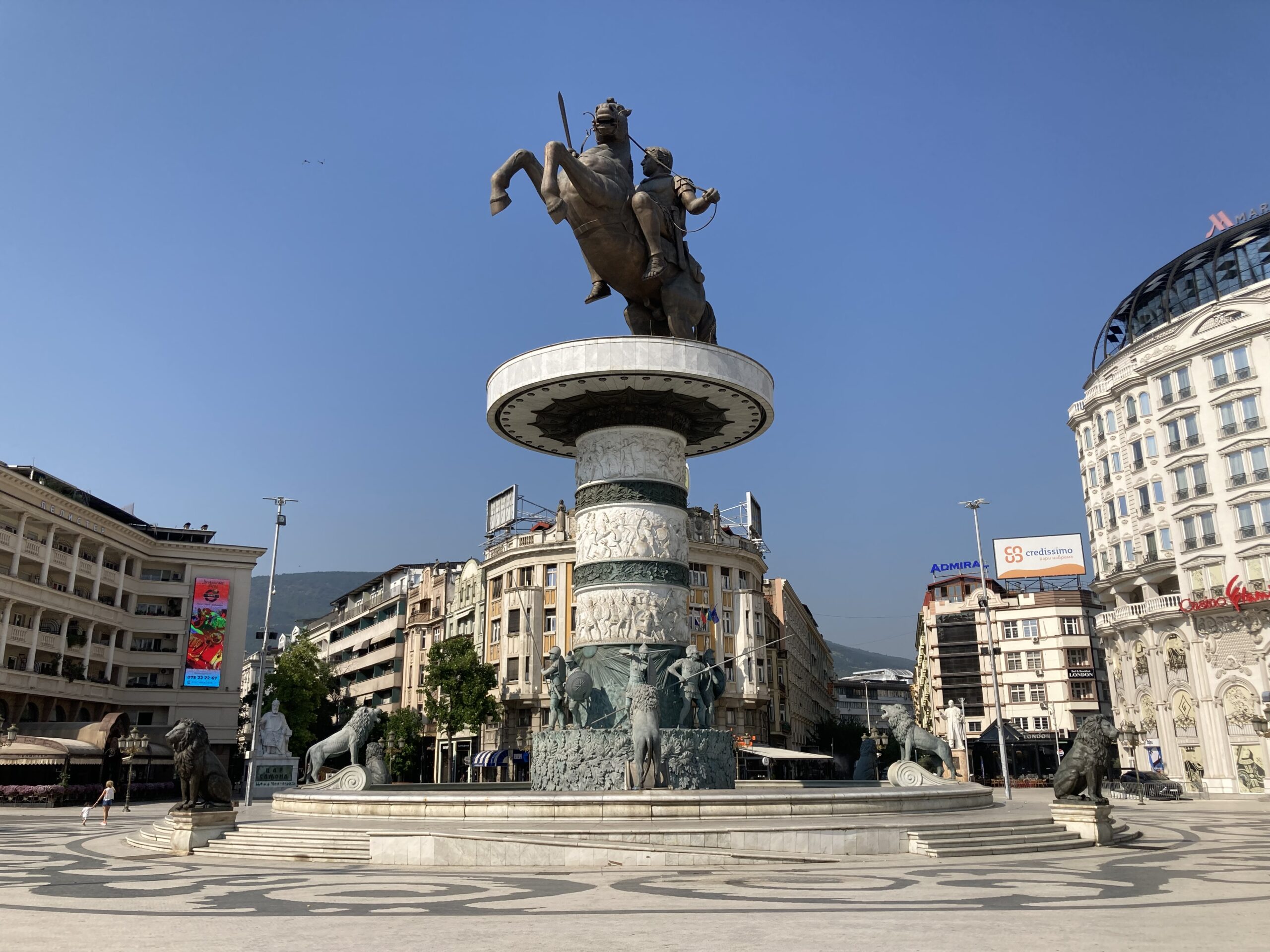
If you turn your head around, however, you will be met with a very different scene. This is the Monument to Alexander III of Macedonia, who is more popularly known as Alexander the Great. This is the reason why a mostly Slavic language speaking country that is partly Christian, and partly Muslim (mostly the former) seems to be so obsessed with an ancient pagan kingdom, a legendary figure whose charm one cannot deny!
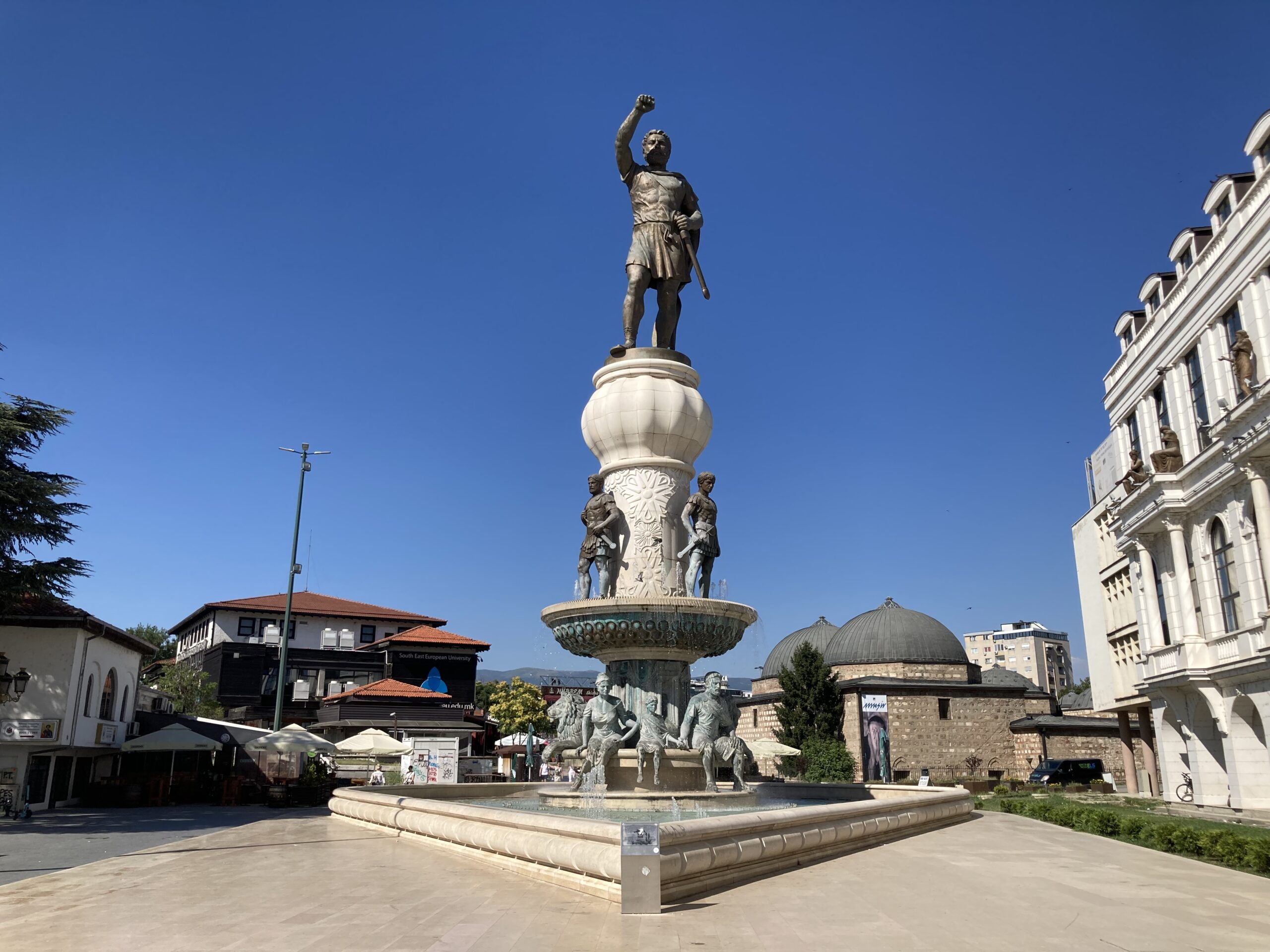
While it is questionable to what degree can one find connections between Alexander the Great and Macedonians as we know them today, that did not stop the authorities pressing on with their less than realistic plans to renovate the city as an almost “ancient” city that lives and breathes today, under a project titled Skopje 2014. This project, which started back in 2010, envisioned a new Skopje that paradoxically would look older. If you trace where Alexander’s horse is looking at, you will come across a smaller yet still rather sizable monument, this time one that is dedicated to Philip II of Macedonia, the father of Alexander the Great.

While the obsession with such ancient figures may be interesting, what is outright surprising is the city’s fascination with sculptures as a whole. There are thousands of these spread around Skopje, almost all of which were done as part of the Skopje 2014 initiative. I have been told by the locals, on a few separate occasions, that it was all an elaborate hoax by the previous (now ousted) government to squander public funds. I for one would like to believe that this was the case. It is certainly a more reasonable explanation of the entire situation than an intentional national effort to create a more classical image for a small country in the middle of the Balkans in 21st century. Nothing other than some sort of shadowy deals could explain The Bridge of Art, for example, as it is photographed here.
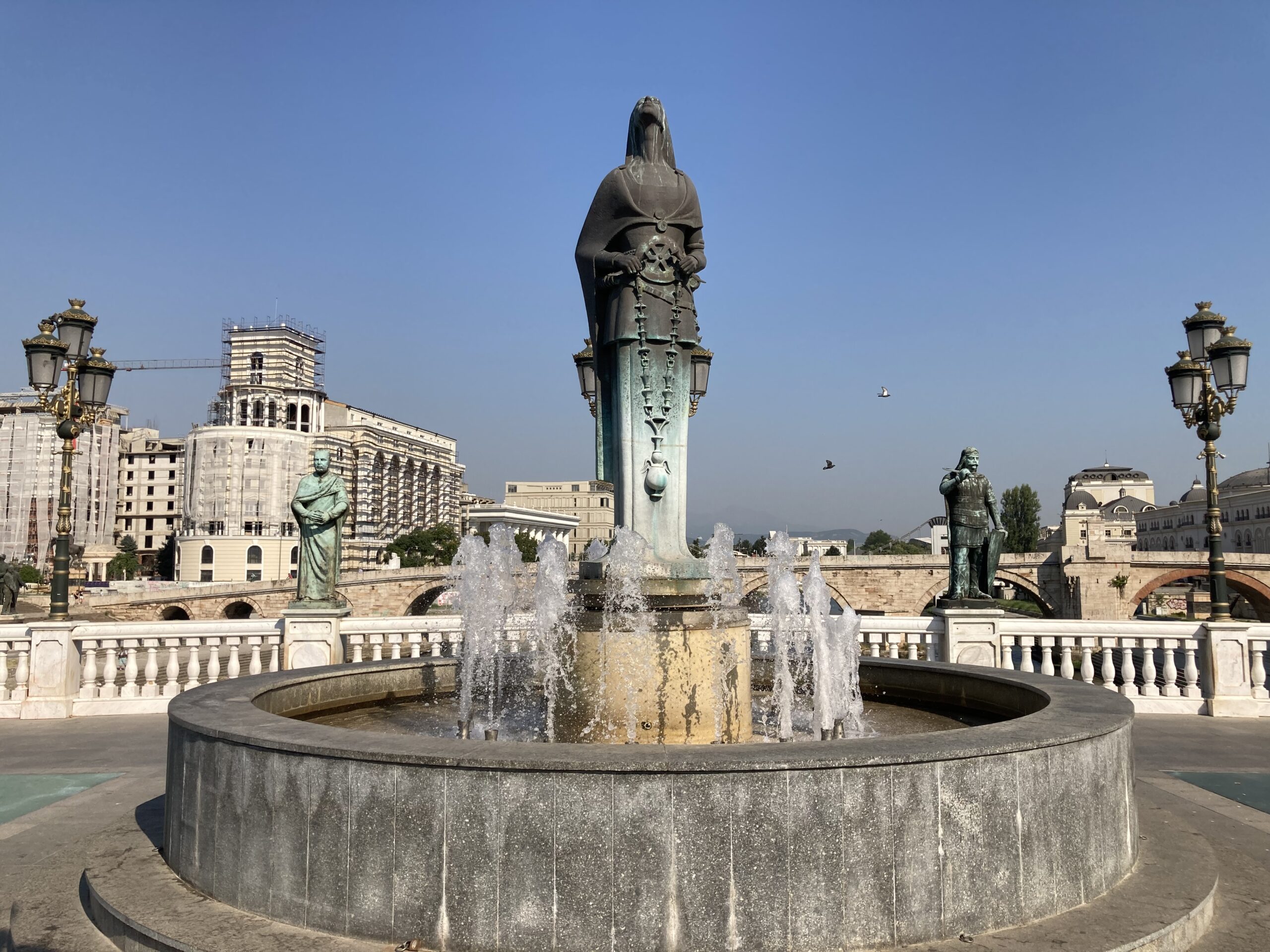
While it has an ungodly number of sculptures on both of its sides, planners did not forget to put yet another sculpture in the middle of this bridge. If these barely ten-year-old sculptures were not in such a bad shape, one could have been fooled into thinking that they were not done in a hurry to steal from the people. Alas, the photograph speaks for itself.

Though I may sound a bit jaded, and outright cynical at times, you must understand that this is hardly some ignorant foreigner’s take on the issue. Almost all Macedonians that I met so far were outright furious about the way their tax money was spent on supposedly making Skopje more attractive. Some seems to be angry at the erection of so many statues that are relevant neither for the Muslim nor for the Christian communities of the country. Some say that the sculptures were not a bad idea to begin with, but that they were not built properly. This lack of love from the people towards these pieces of art can be seen all across the city. You will repeatedly see these sculptures being vandalized, even in the dead center of the city, as is the case with the Monument to Tsar Samoil as it is seen above.

There are a few, more interesting pieces to check out at the Woman-Warrior Park. In fact, at least some of these seem to be much older, having been placed here all the way back when Yugoslavia was still a on our maps.

Thankfully, even some new sculptures and monuments have more to do with the more recent Macedonian past. You can see one dedicated to Mother Theresa right here, who was born just a few hundred meters away from this spot.
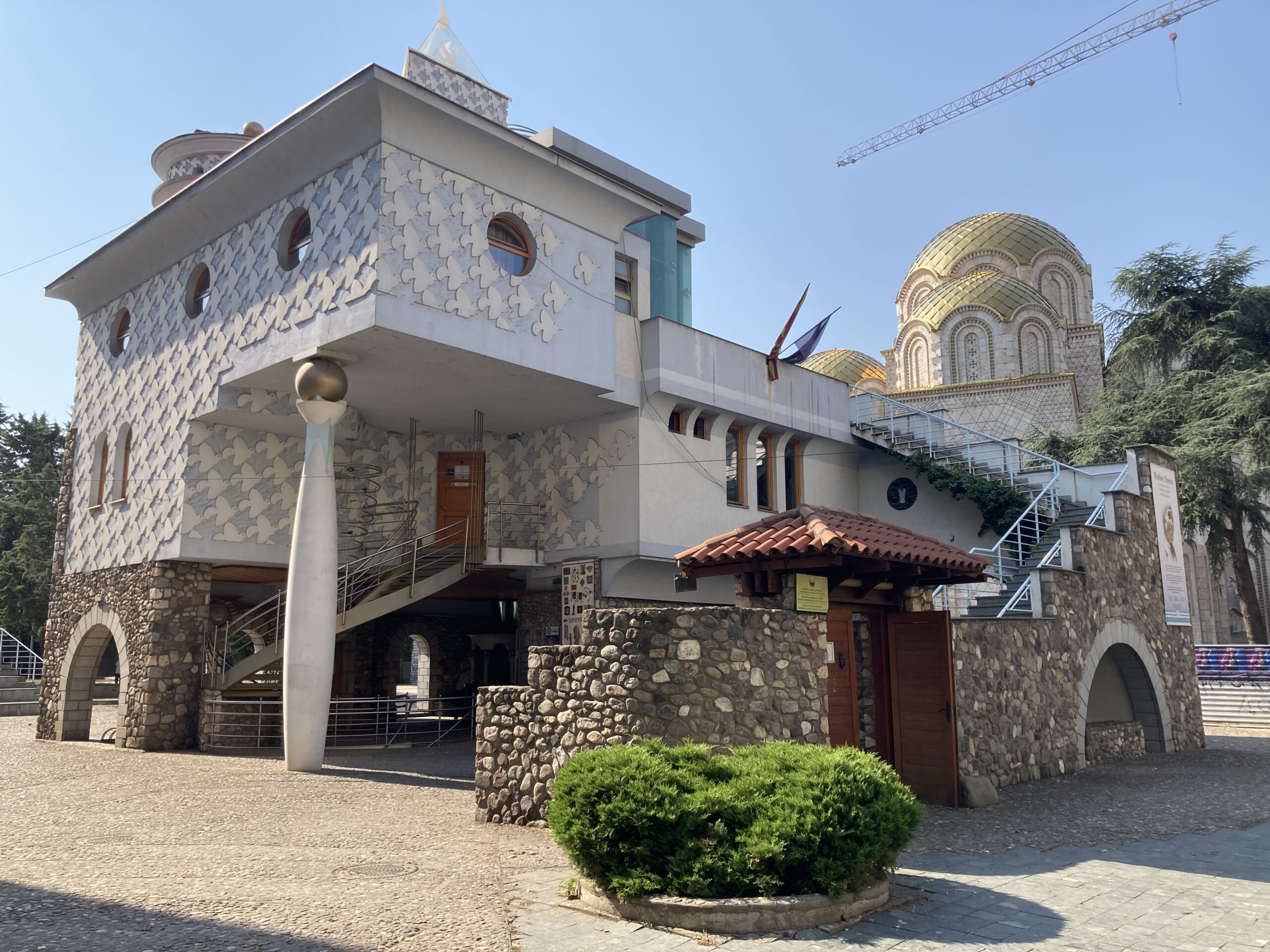
Behind this statue, you can see the very bizarre but inviting looking Mother Theresa Memorial House. This is an extremely small museum, with a chapel attached to it, that is dedicated to the life and doings of Mother Theresa.
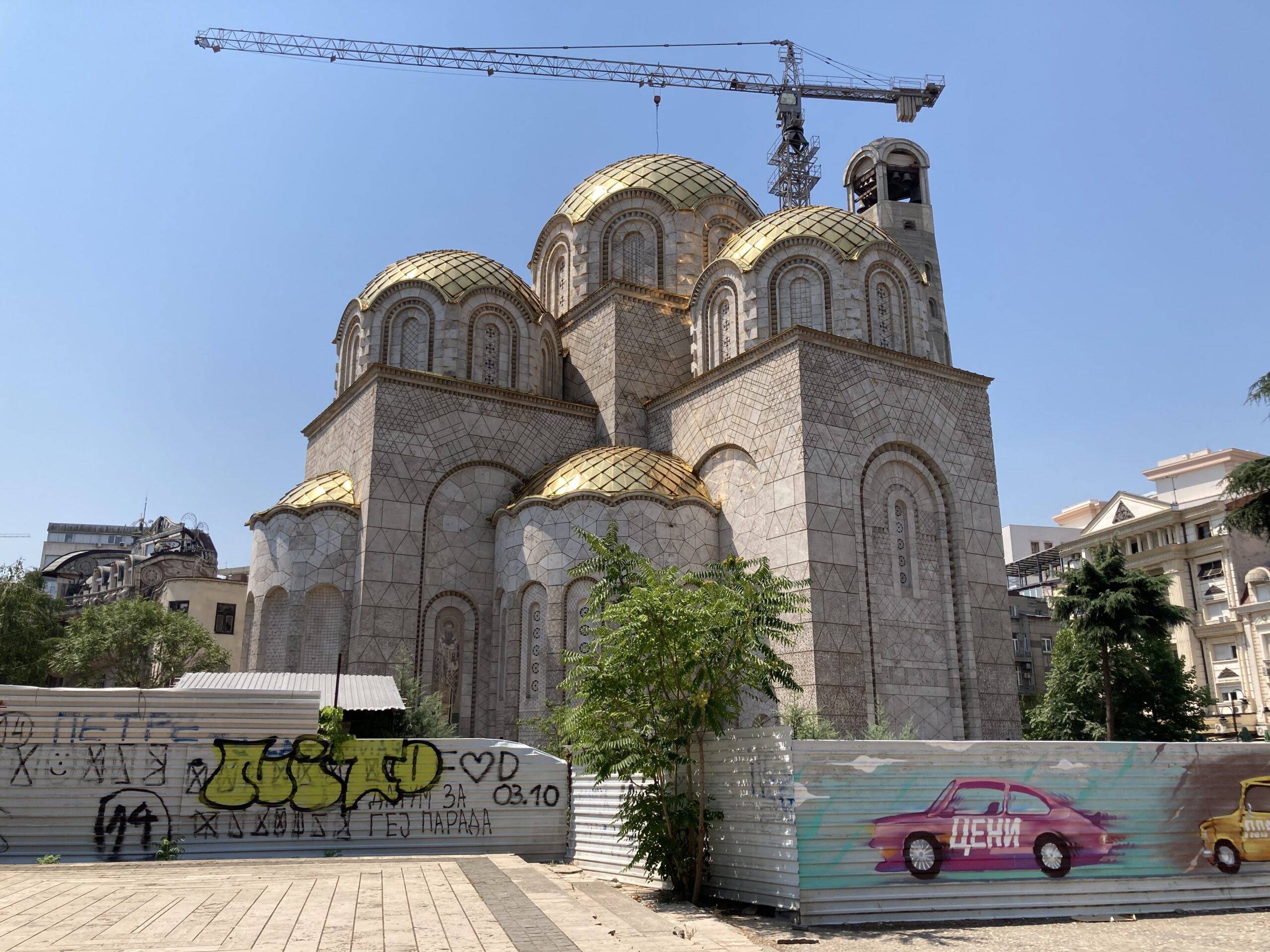
To the right side of the Memorial House, one can find a construction site. Apparently, this will be the Church of “Holy Equal-to-the-Apostles Emperor Constantine and Empress Elena” once it is complete. It certainly looked like a unique project and seems to have been funded by a religious organization that is foreign in origin. It is not surprising as most of the newer mosques and churches across the Balkans have foreign funding, often from Turkey and the Holy See respectively.
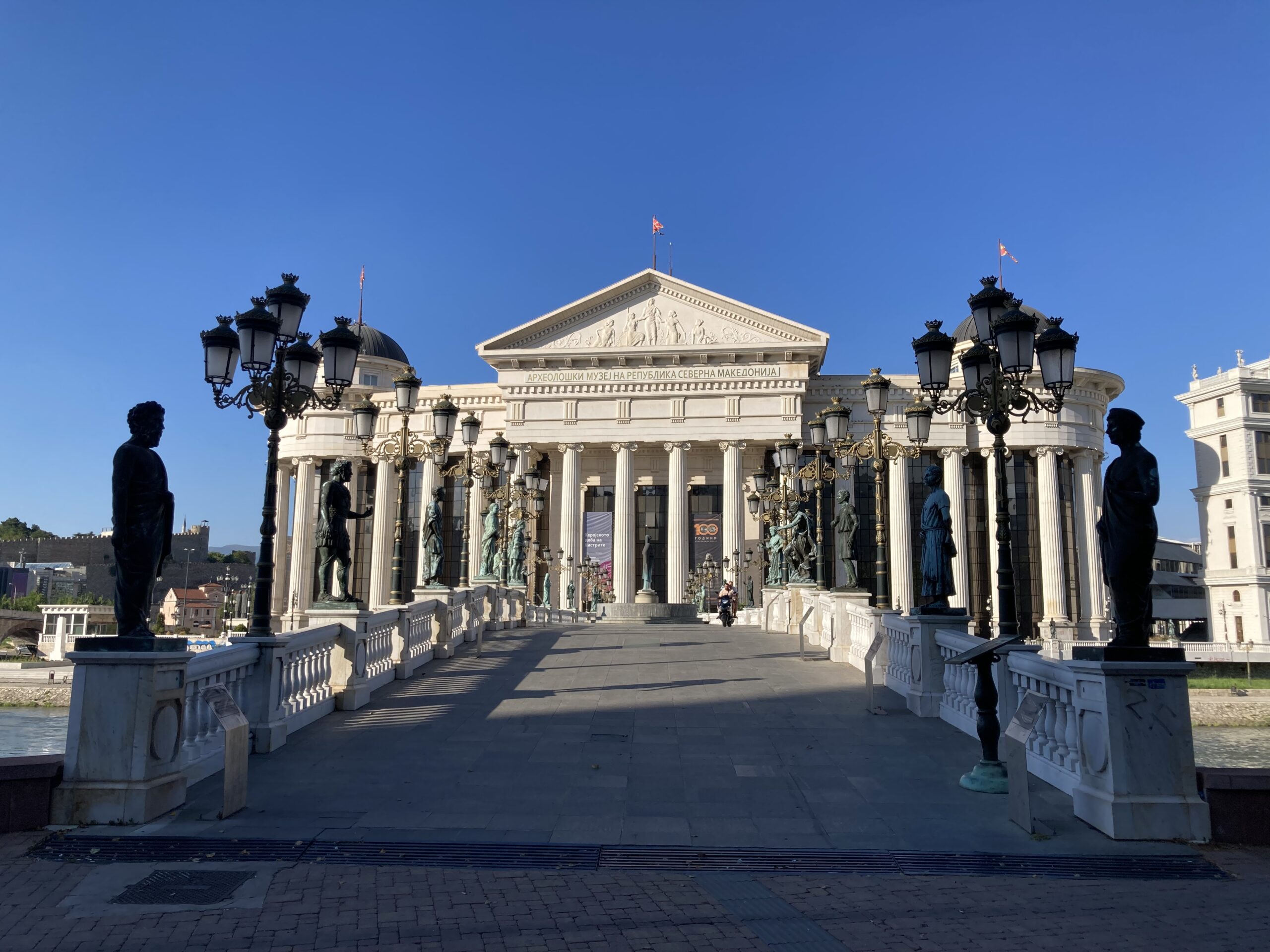
Once you are done wondering around the southern part of the town, which is also known as the Christian side of the city, it will be time to make your way to the northern, more Muslim side. You can do this by crossing one of the many bridges, such as The Bridge of Civilizations in Macedonia, which directly leads to the Archaeological Museum of the Republic of Macedonia. You better skip visiting this museum, as there is sadly nothing much to see there, and you will be overpaying in the entrance for a temporary exhibition you never wanted to see.

As you cross these bridges, make sure to look around you. You will come across a few “ships” that can, obviously, not sail. These are ship-shaped restaurants and event venues. The one you can see above is supposed to be the Restaurant Galija. Most of them seemed inactive when I was in the city in the summer of 2024, so there is a good chance these too are suffering from a slow death, much like the sculptures that were placed all around the city starting by 2010.
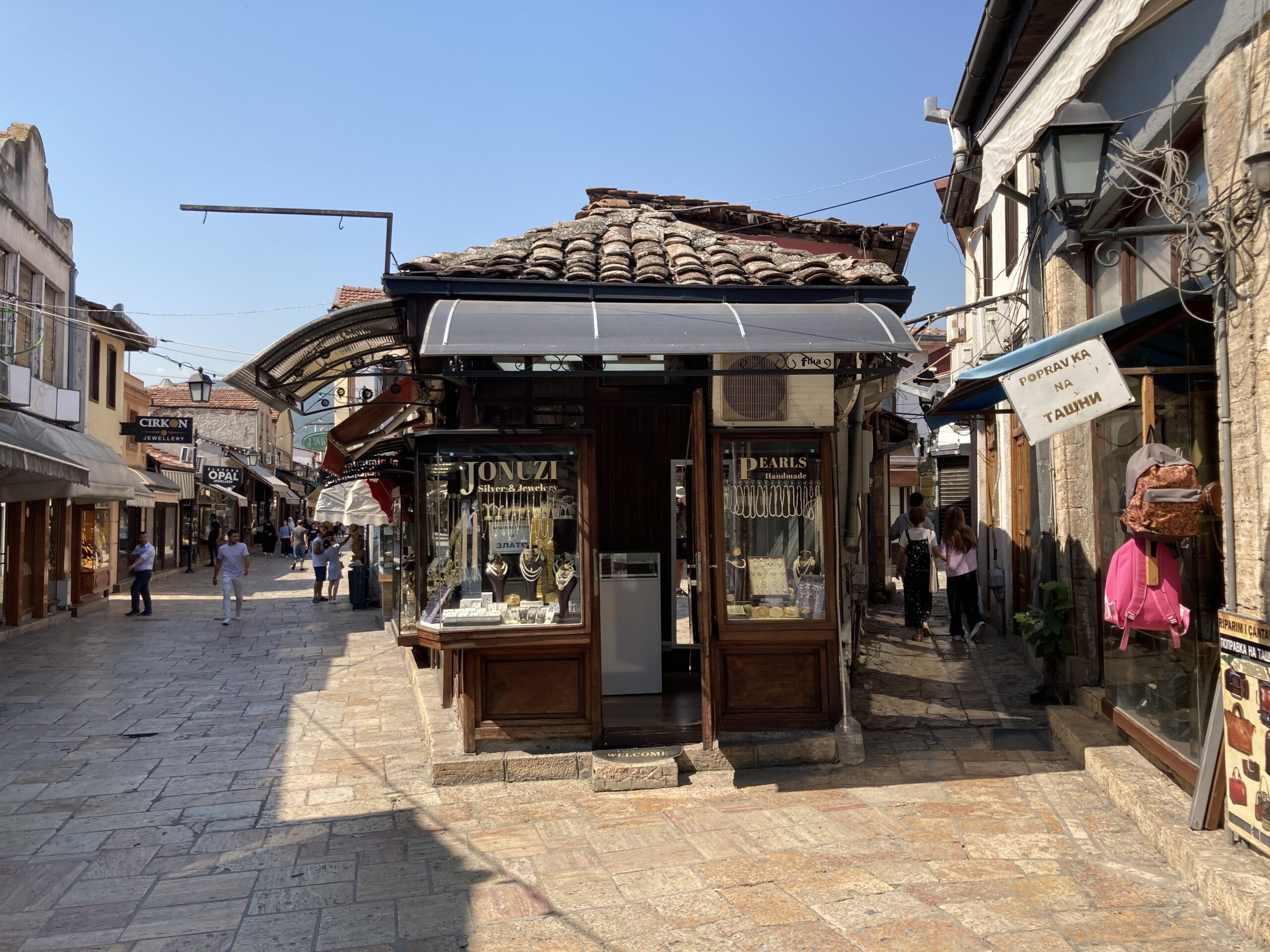
Eventually, you will get to the very heart of Skopje, or at least a more authentic part of the city. This is the Old Bazaar. While it is a very touristic part of the town, it does not change the fact that this part of the city has more of a substance to it. Though I am not a huge fan of bazaars of any kind, I must admit that this one had the right mixture of smiling locals, reasonable prices, and a decent amount of choice for travellers of all sorts.
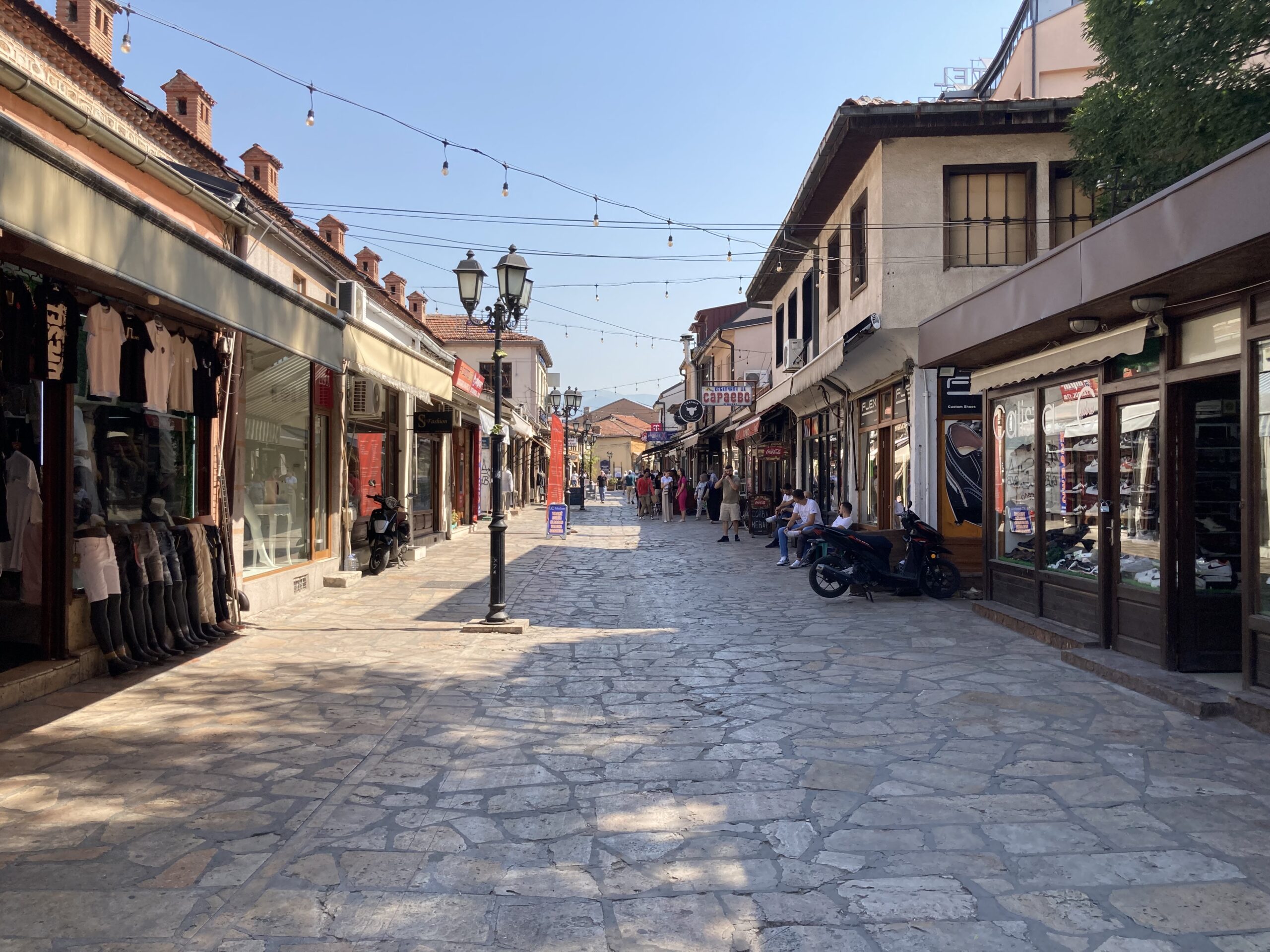
As I was walking around these streets during daytime, they seem a bit deserted. This had to do with me being there during the peak of summer heat. In nighttime, the streets you see above are filled to the brim with tourists and locals alike, but seemingly mostly Turkish tourists who will be looking for the best grilled meat the city has to offer.
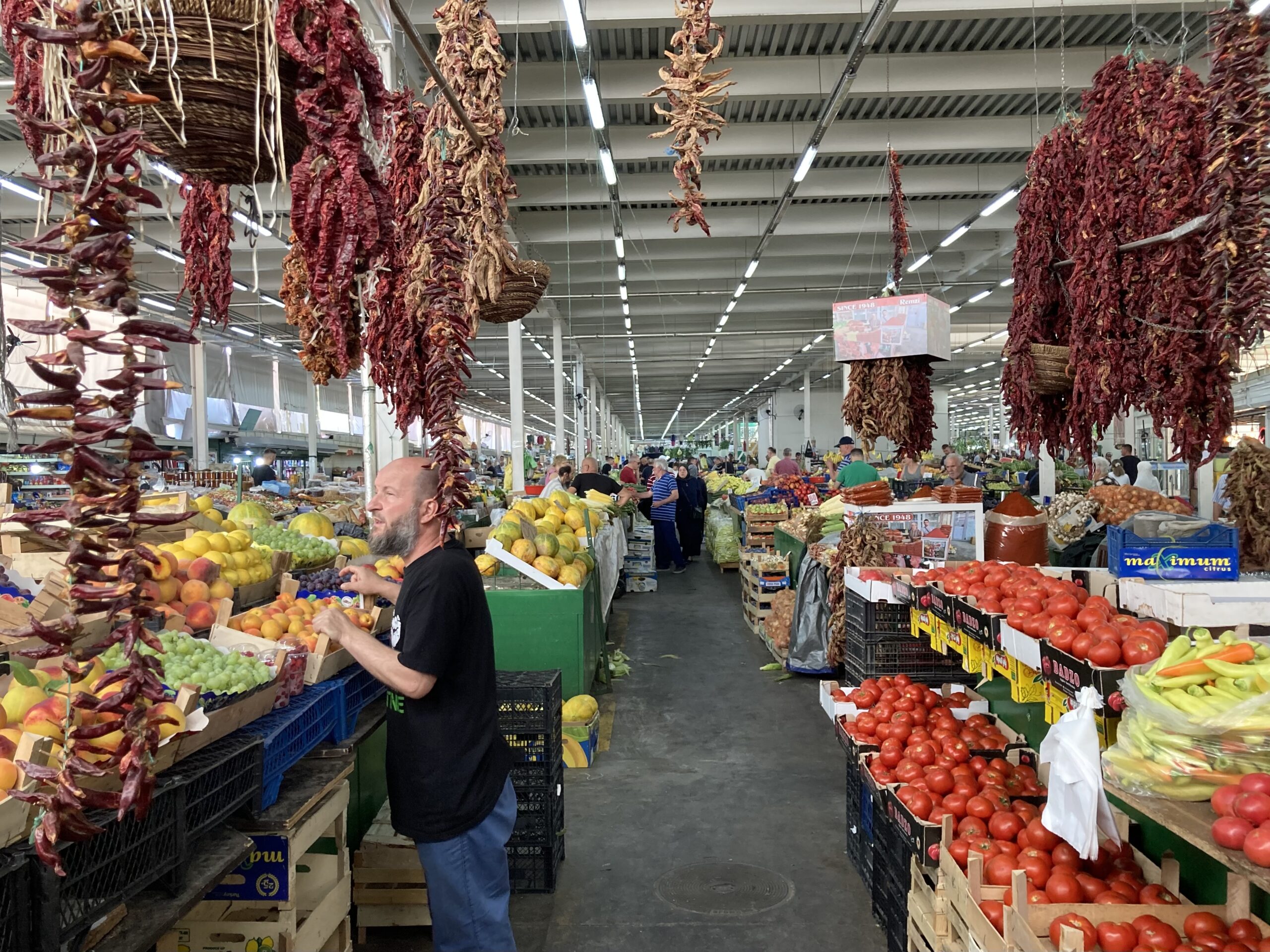
If you want to see more of the locals as I did, then you are better off going to the Bit Bazaar at daytime instead. Here, you can find any fresh produce you can think off. This is one of the best parts of Skopje to explore, even for those who are not interested in shopping in the slightest, like me.
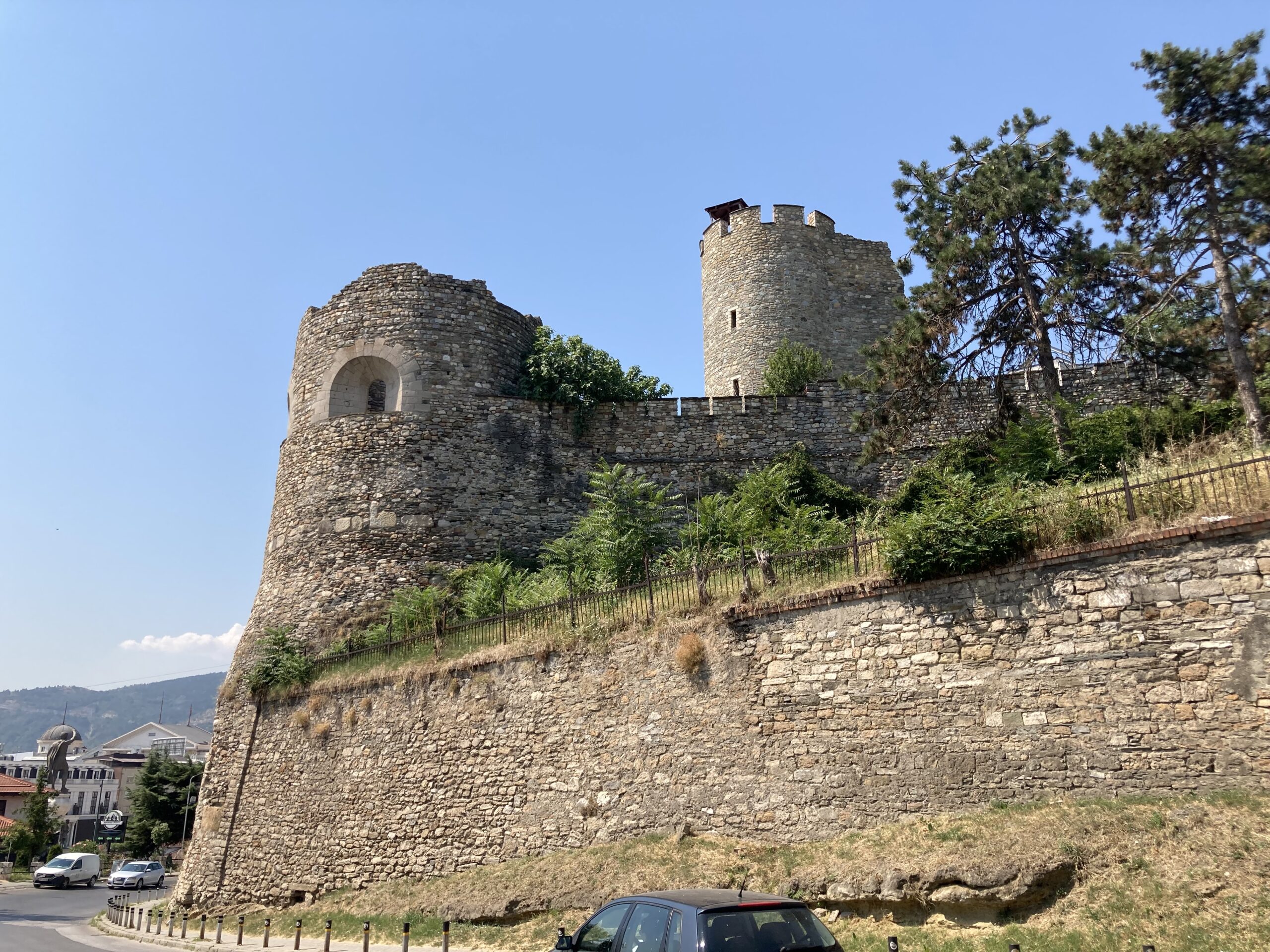
Once you are done with what the city has to offer, for the most part that is, it is time to see it from above. For that, you will need to visit the Skopje Fortress.
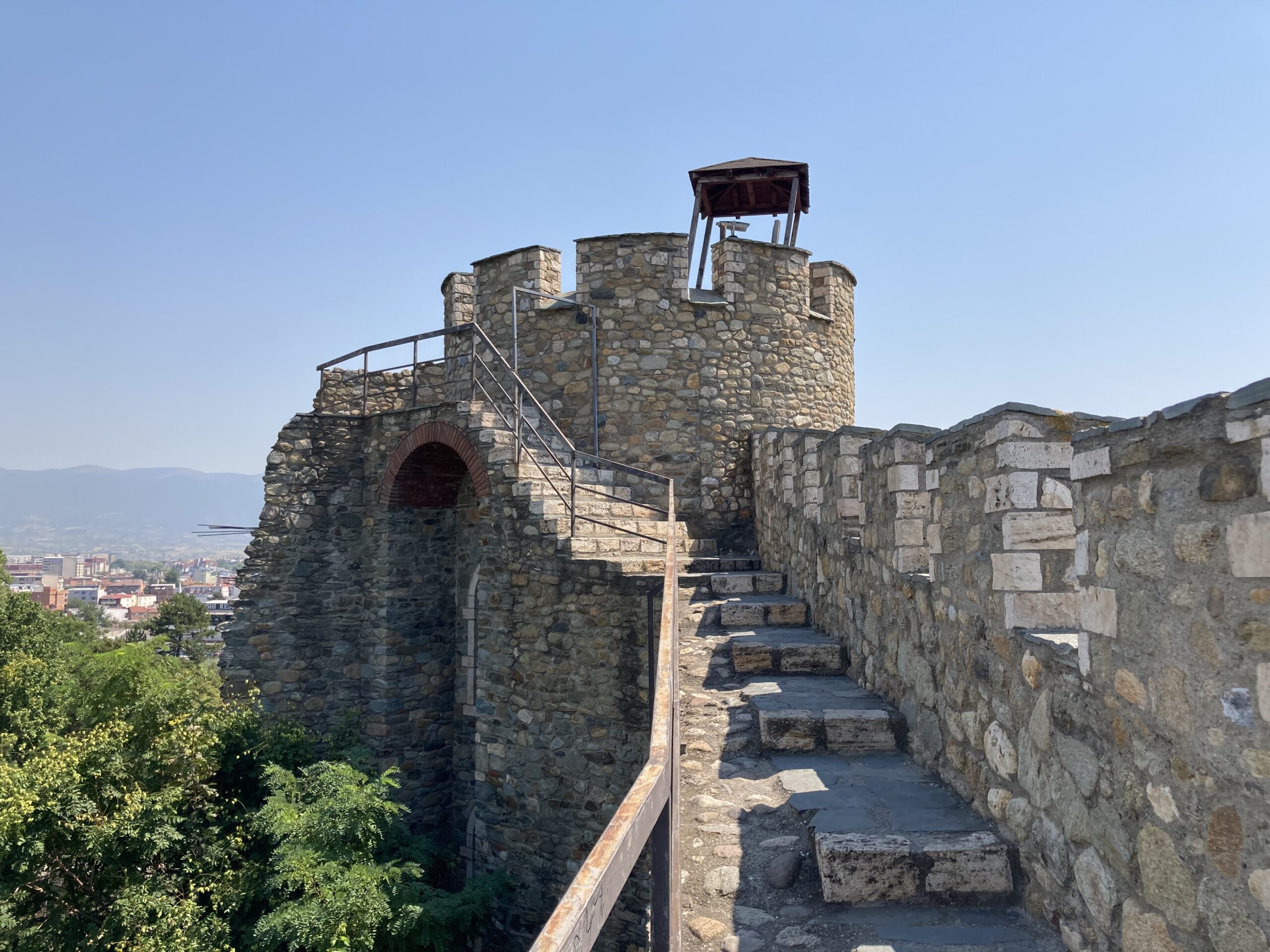
It is completely free to venture into the fortress and walk around. Once you find your way on top of the walls, you just need to follow them all the way up to the best vantage point the city has to offer.
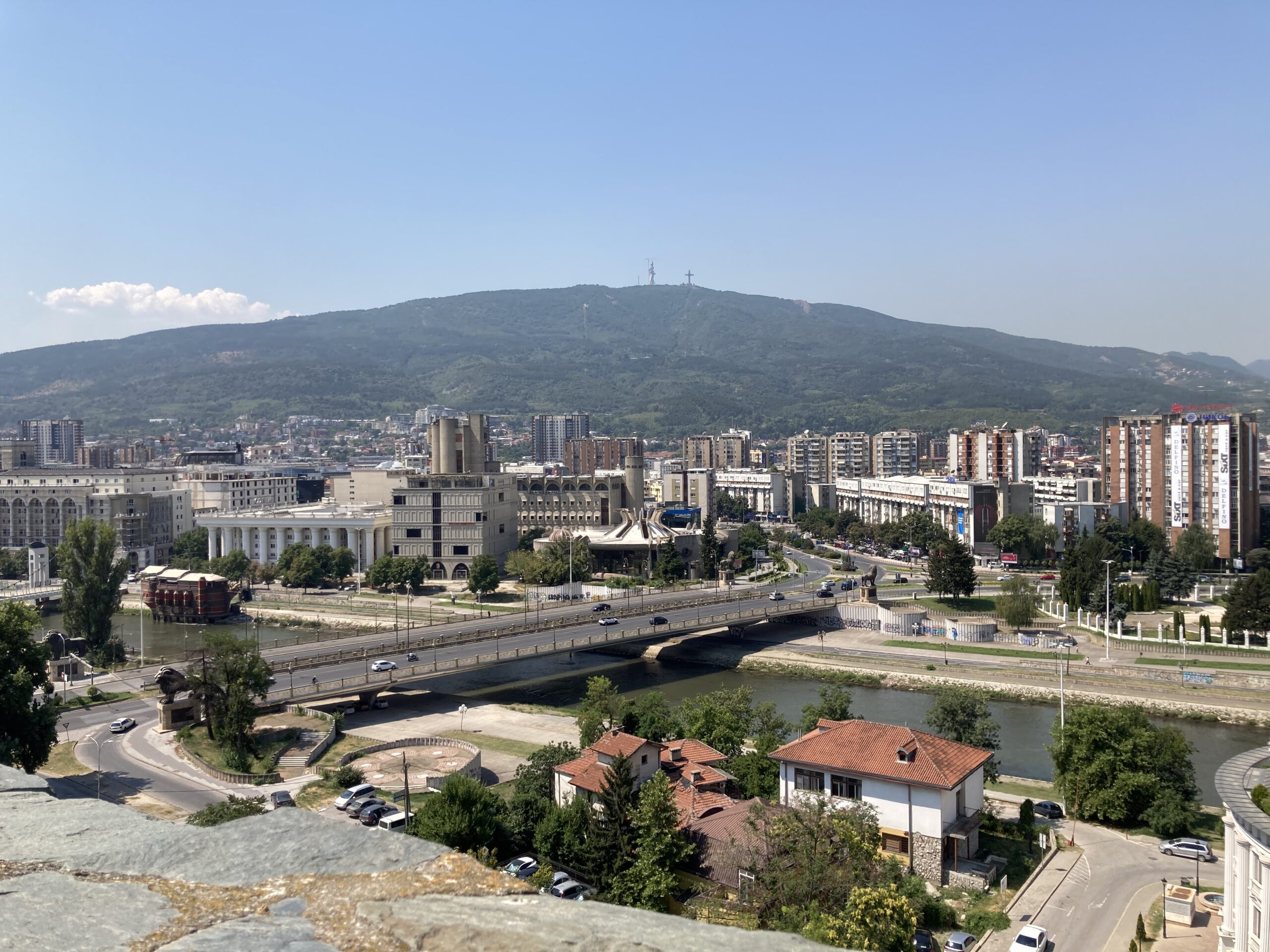
While technically you can see the city from far higher up, by taking the cable car to the Millennium Cross which you may see up in this photograph, you will not be able to see all the details from up there. Here, while still being close to the city center, you can really appreciate the diversity of architecture in Skopje. This was a very bittersweet moment for me. While the Yugoslav and Ottoman pasts of the city seem to have been preserved quite well in places, and are inviting to say the least, the city has been clearly wronged by the latest wave of buildings that destroyed the otherwise rather authentic mix of urban culture Skopje already had. This interesting mix would be reason enough for many tourists to pack up and make their way to Skopje. I am afraid the whole issue surrounding Skopje 2014 was a very poorly made gambit at best, and an elaborate ruse to steal from an already impoverished country at worst.
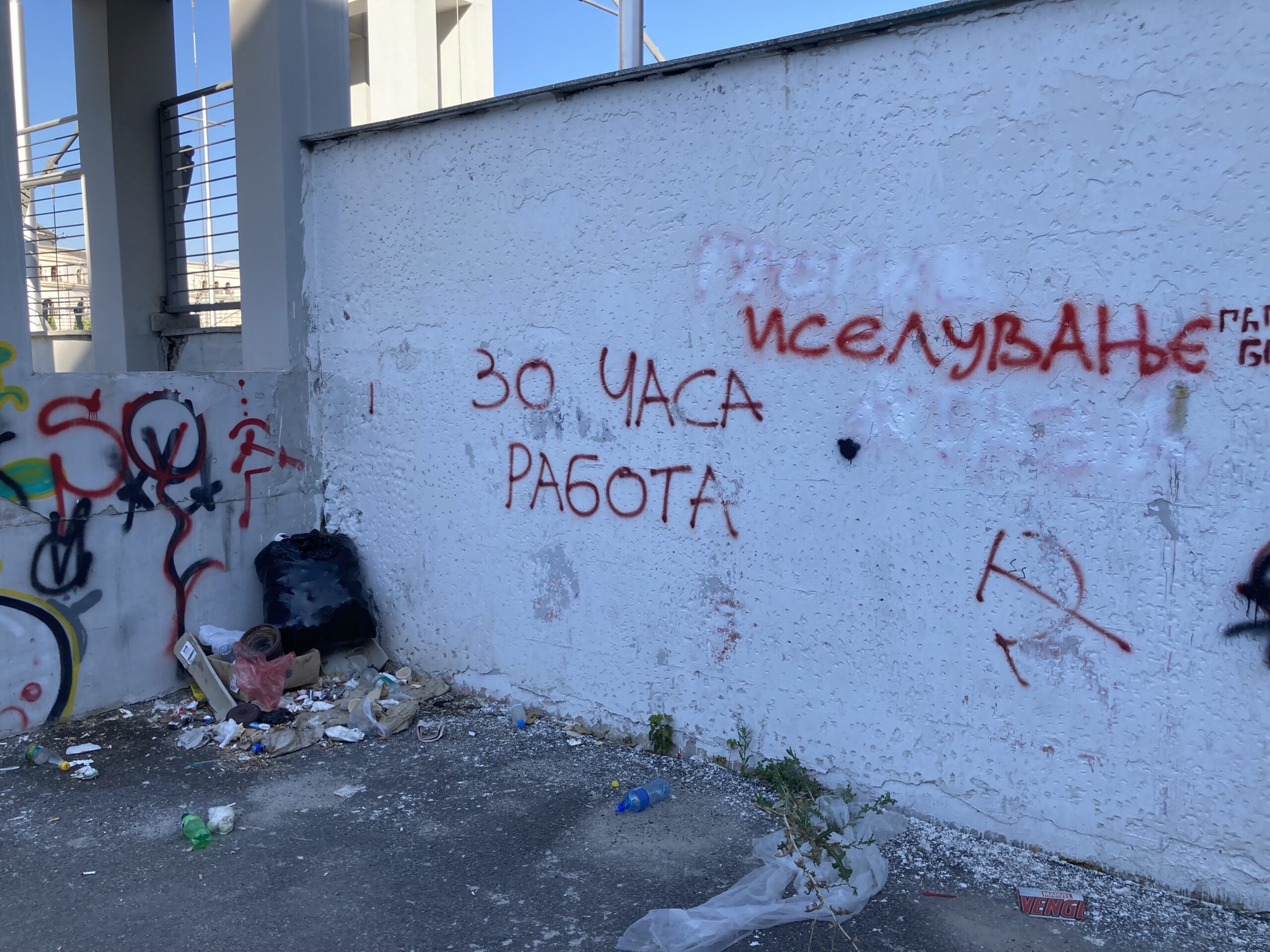
I will stop this article on two simple notes. First of all, in case you are wondering, there is certainly more that Skopje offers to its visitors than the spots I mentioned here. You will have to wait a bit more to hear about the best examples of brutalist architecture the city has to offer, and its museum scene which leaves a lot to be desired. Secondly, as you can see, behind its shiny (and already decaying) exterior, there is much poverty in Skopje. Municipalities seem to be strapped for cash, as they cannot even clean most of the main streets properly. One can find homeless people trash diving all around, and beggars are practically the mainstay of most Skopje streets. Communist graffities can be seen adorning the walls of the city’s many different buildings and bridges, perhaps made by people who yearn for the older times, but most probably by the youth who cannot help but ask for something to change. Being home to some of the most decent and smiling people I have seen so far, I cannot ask anything but the best for what the future holds for Macedonia and its people.
